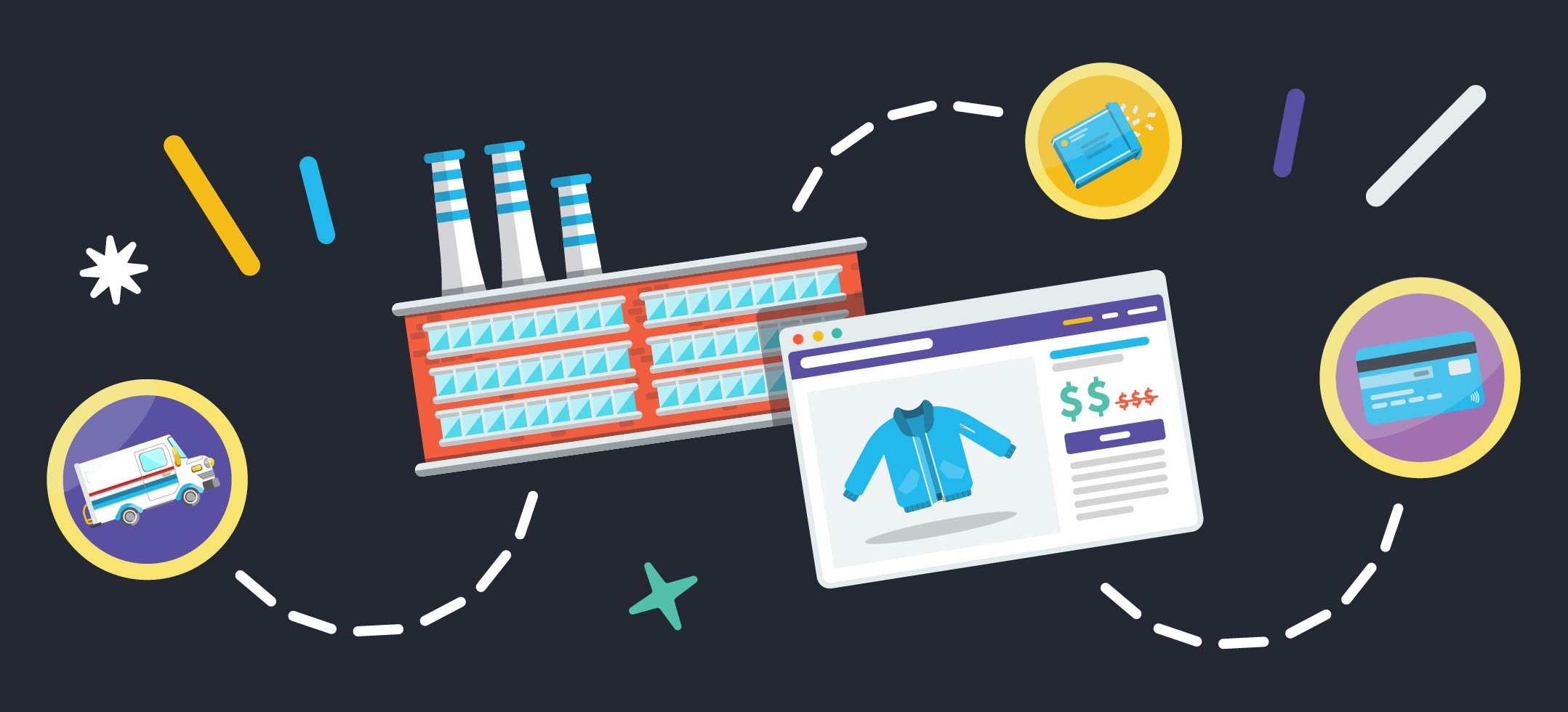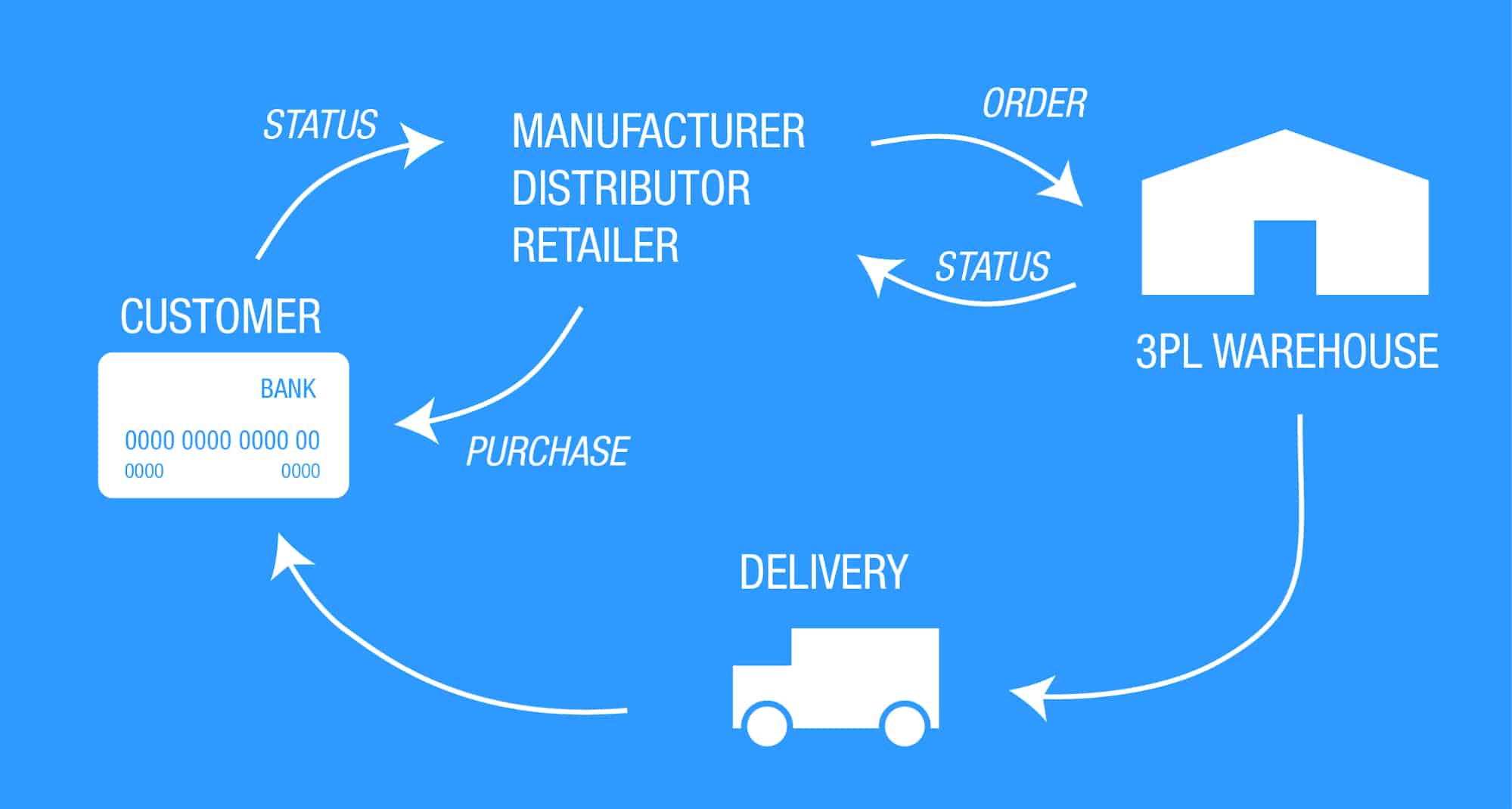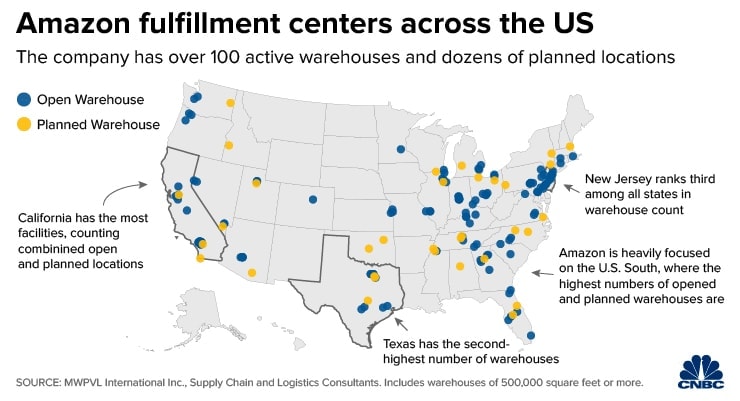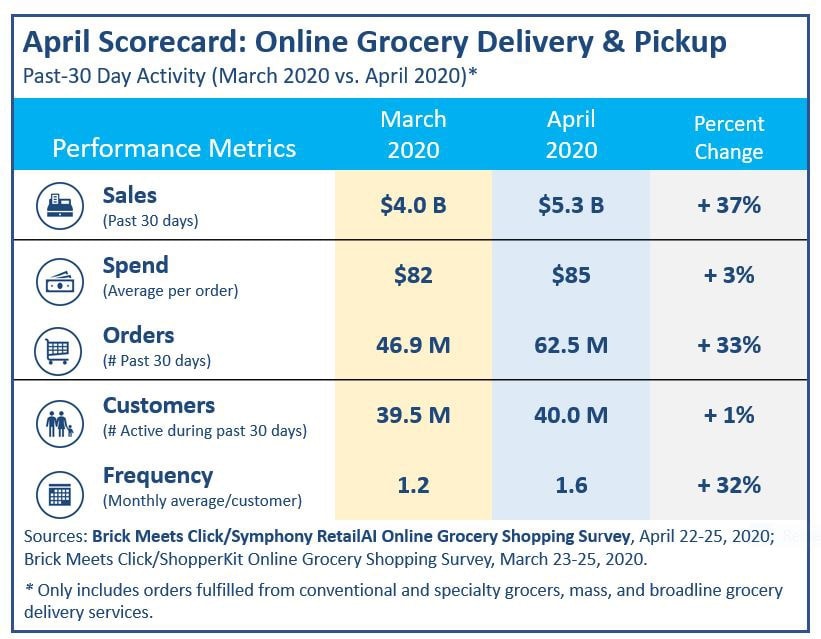
The Ultimate Guide to Utilizing a 3PL Provider for Ecommerce Fulfillment
There’s a lot that goes into building a successful ecommerce company: You need to have a great product, a strong marketing campaign, and you should know how to get your products to customers as quickly as possible.
But as your company continues to grow, you’ll have a harder time keeping your fulfillment in-house. At some point, you’ll need to expand your logistical operations—either to keep up with increasing demand, because you want to expand your customer base, or both.
One of the most effective ways to do this is by outsourcing your supply chain to a third-party logistics (3PL) provider. This will help save time and money, while allowing you to free up internal resources that can be used for other important operations (like sales, marketing, and product development.)
What is 3PL?
Third-party logistics (or 3PL) is a fulfillment service that manages logistical operations for a company. Companies providing 3PL services are responsible for some or all of the supply chain management functions, such as:
- Storage
- Inventory management
- Packing
- Transportation
- Kitting and assembly
3PL is a popular solution for ecommerce companies, and its providers act as the bridge between the online company and the customer by expediting order fulfillment. Ecommerce companies using 3PL services have their inventory stored at special warehouses known as fulfillment centers. When a customer makes an online order, the product is pulled, prepped, and shipped directly from the fulfillment center to the customer’s doorstep. Fulfillment centers can also process business-to-business (B2B) orders, including high-volume merchandise delivered to big-box retailers like Target and Walmart.
The goal of 3PL is to help ecommerce companies enhance their operations by outsourcing the logistics process, which is why businesses of all sizes—from small ecommerce shops to Fortune 500 companies—turn to 3PL to streamline their supply chain and create a seamless fulfillment strategy.
In this post, we’re going to look at some of the key benefits that come with outsourcing your ecommerce supply chain functions to a 3PL provider.
Why 3PL Providers Are Useful for Ecommerce Brands
Studies show that 3PL services have been widely successful for a variety of reasons.
According to a survey by Korn Ferry published in the 2019 Third-Party Logistics Study, nearly 90% of 3PL customers said their operations improved after working with a 3PL provider.
The most obvious advantage of outsourcing fulfillment to 3PL providers is convenience. With someone else taking care of their logistics, ecommerce brands can devote more time and energy to other areas of their business.
But 3PL providers do more than simply lessen the workload: They can also provide ecommerce brands with an opportunity to improve other areas of their business.
Lower Expenses
Outsourcing part of your supply chain functions to a 3PL provider can significantly increase your company’s savings potential.
How? To start, you don’t have to worry about paying rent for a warehouse or shared industrial space, and you don’t have to hire and pay a fulfillment team. Outsourcing your back-end work to a 3PL provider also means you won’t be responsible for liabilities, such as damaged inventory, broken equipment, and accidents that happen in the fulfillment center or when transporting inventory. Your 3PL provider will bear these expenses, as well as other operating costs like equipment, training and certifications, and IT systems.
Leaner Workforce
Companies that are in charge of their entire supply chain have to hire and manage drivers and warehouse employees. This can divert limited resources away from other areas of the company. With every new employee added, that means more time spent managing schedules, payroll, and taxes. This can be especially overwhelming and time-consuming for small businesses that may not be equipped to build and manage a fulfillment team.
Outsourcing to a 3PL provider will prevent your workforce from being unnecessarily bloated. You don’t have to worry about hiring, training, and managing ancillary staff like delivery drivers and warehouse personnel. These workers are employed by your 3PL provider, which means you can spend more time building your front-end business team.
Improved Delivery & Distribution
Over the last couple of years, Amazon has greatly expanded its distribution network to give customers access to speedier delivery options. More than 70% of Americans now live in an area where they’re eligible for one-day shipping from Amazon.
As a result of Amazon and other retailers expanding their fulfillment capabilities, more customers want expedited shipping options with their ecommerce orders. According to a study by UPS:
- 75% of online consumers will pay more for expedited shipping
- 61% expect orders placed by noon to qualify for same-day delivery
- 64% expect orders placed by 5pm to qualify for next-day delivery
With the exception of big-box retailers, many ecommerce brands struggle to keep up with these consumer expectations because they simply don’t have the infrastructure to provide nationwide one and two-day delivery.
The good news is that 3PL makes it easier for small and medium-sized ecommerce brands to expand their distribution networks and cut delivery times without having to build more infrastructure.
For example, say a medium-sized ecommerce brand based in California handles its own fulfillment process on the West Coast, but it struggles to provide speedy delivery to other areas of the country. Partnering with a 3PL provider on the East Coast would allow them to outsource their fulfillment in these regions so they can provide consistent, fast delivery to more customers.
Ecommerce brands can use 3PL to expand their distribution network by outsourcing to different regions, or they can outsource their entire fulfillment service. It lets small and medium-sized companies compete with Amazon and other big-box retailers without having to spend time and money expanding their logistical infrastructure. For this reason, many ecommerce brands view 3PL as part of an effective customer satisfaction strategy.
Scale with Demand
3PL gives ecommerce businesses a scalable solution that makes it easier for them to rapidly expand operations to keep up with growing demand. Valuable for businesses of all sizes, this feature is especially helpful for small and medium-sized ecommerce companies that may have difficulty upgrading logistical operations to match consumer demand.
Consider this scenario: A small ecommerce company located in the rural Midwest becomes an overnight sensation. Unable to keep up with demand, they expand their manufacturing operations and partner with 3PL providers in the Midwest and on the East and West Coasts. Now the company can focus more on generating supply, while their 3PL providers take care of supplying customers in a timely manner.
Working with a 3PL provider allows a company to be more responsive to demand surges. You can outsource logistics during the holiday season when you’re expecting a spike in sales, or you can choose a long-term solution that supports your company as it continues to grow. You can also choose to scale 3PL services back during slower periods, so you aren’t spending money on services that aren’t being used.
Working with a 3PL provider allows a company to be more responsive to demand surges. You can outsource logistics during the holiday season when you’re expecting a spike in sales, or you can choose a long-term solution that supports your company as it continues to grow.
Work with professionals
How much do you know about shipping and fulfillment? Sure, you can assemble your own team. But without industry experience and expertise, you won’t be as efficient and effective as a 3PL provider. That’s because logistics and fulfillment are their specialties. They know how to use IT solutions to minimize bottlenecks and keep the supply chain running smoothly, and how to meet deadlines so orders are fulfilled on time.
The Role of 3PL During the COVID-19 Pandemic
The COVID-19 pandemic has disrupted the supply chain for a number of businesses. Large companies that transport goods across borders have to worry about lockdown protocols and border closures, and many ecommerce companies initially struggled with outages due to increased sales and disruptions in the supply chain.
For brick-and-mortar stores, the COVID-19 pandemic has been especially disruptive. Obviously, fewer people are shopping in-store because of the virus. But with that, the coronavirus pandemic threw many brick-and-mortar stores head-first into the realm of ecommerce. Businesses have now been forced to build or expand ecommerce operations in an unusually short period of time, and no industry has had to learn quicker than the grocery industry.
The COVID-19 pandemic has been especially difficult for grocers. Nearly one-third of households in the United States ordered groceries online in March, and the demand for online groceries reached a new high the following month. On top of that, picking and packing for online orders is often done within the supermarket. And without a dedicated space for ecommerce fulfillment, grocery stores have been struggling to keep up with demand.
Many grocers turned to 3PL providers to help them keep up with their ecommerce demand. 3PL companies offering micro-fulfillment services have helped grocers become ready for online sales. Micro-fulfillment is an outside-the-box solution that gives businesses like supermarkets and brick-and-mortar retail stores quick relief during periods of high demand.
These miniature distribution centers are usually located in the back of the store or at a nearby warehouse. Unlike traditional fulfillment, micro-fulfillment services are designed to cover a local market, which is why most micro-fulfillment centers come equipped with IT infrastructure for managing inventory and getting orders ready for delivery or collection.
Micro-fulfillment isn’t new: Many businesses have been using it to slowly build ecommerce operations, such as deliveries and click-and-collect shopping. However, in the era of COVID-19, micro-fulfillment has changed from a creative solution to a valuable asset as businesses are struggling to take their services online.
In the era of COVID-19, micro-fulfillment has changed from a creative solution to a valuable asset as businesses are struggling to take their services online.
Partnering with 3PL providers that offer micro-fulfillment services will minimize downtime and help local businesses make a smooth transition into ecommerce.
How 3PL Empowers Ecommerce Companies
We’ve touched on the benefits of 3PL and how it can help ecommerce and brick-and-mortar stores. But how effective is 3PL at empowering ecommerce companies? Let’s look at an example.
A specialty cookie manufacturer was in startup mode and needed help breaking into the packaged cookie market. While they knew they had a successful range of products, the company didn’t know how to effectively get the cookies from their bakery into the customers’ hands. That’s when they decided to reach out to WSI for help with 3PL services.
WSI took over warehousing, distribution, fulfillment, and transportation services for the cookie manufacturer and created a distribution center on each coast so they could reach customers across the United States. They also took over transportation, and came up with a system that enabled the client to save between 40-45% on LTL pricing (which is weight-based freight) by utilizing WSI’s global transportation volume.
Thanks to outsourcing their 3PL, the cookie manufacturer was able to outsource:
- Storage, packing, and distribution
- Transportation
- Employee training and development
In the end, WSI helped the cookie manufacturer get their products shipped to major national retailers and even explored methods to improve the fulfillment process, like changing the pallet configuration and maximizing the space efficiency of the product to help the client spend less money on freight services.
What to Look for When Vetting a 3PL Provider
If you’re ready to outsource your logistical operations, the next step is hiring a 3PL provider.
There are a number of companies to choose from, but not every 3PL provider offers the same services. Depending on your industry, one provider may be better suited for you than another. Below is a list of features to look for when researching 3PL providers.
Related Clients and Industry Experience
One of the easiest ways to determine whether a 3PL provider is compatible with your ecommerce business is by looking at their clients. If they have experience working with similar clients in your industry, there’s a greater likelihood they’ll be able to address your needs.
You also want to make sure your 3PL provider offers integration with your technology. If you’re running a Shopify store, your 3PL provider’s IT tools should be compatible with the Shopify platform. WSI is one example of a provider that’s compatible with ecommerce stores of all sizes. They have the IT infrastructure to integrate with a wide range of retail selling platforms, including:
- Shopify
- Amazon
- Target
- Walmart
Ideally, your 3PL provider should have experience working with ecommerce businesses the same size as you. If you’re a small company, look for a provider that has experience helping small and medium-sized brands with expansion and fulfillment. If you’re an established retail brand, your 3PL provider should be familiar with helping similar companies work with big-box retailers.
Extensive List of Services for Fulfillment
The goal of 3PL is to streamline your fulfillment services, so you provide product delivery that’s quick and consistent. Look for a 3PL service provider that offers a wide range of services for fulfillment, such as:
- Inventory management
- Order tracking
- Labeling and packaging
- Custom packaging, repacking, and assembly
- Advance Ship Notice (ASN)
- UCC 128 labeling
A 3PL provider that offers an extensive list of services can help you implement a seamless fulfillment strategy that protects your brand reputation. Services like these can help ensure your orders are picked, packed, and shipped as soon as possible, allowing you to better manage customer expectations.
Offers End-to-End Solutions
Minimize the chances of setbacks by choosing a provider that offers an end-to-end logistics solution that covers the entire supply chain. Outsourcing your transportation, warehousing, pick-and-pack, and fulfillment to an experienced 3PL provider places your logistical operations in good hands, while giving you more time to focus on other areas of your business.
Incorporates Returns
If you’re running an ecommerce business, you already know that returns are going to happen from time to time. Small business owners may have no problem personally processing returns, but once your brand begins to grow, seriously consider working with a 3PL provider that does the work for you.
Between 15-40% of online purchases are returned, and returns are especially common during the holiday season. In 2019, an estimated $41.6 billion in online sales was lost due to returns.
Processing your return orders can be especially overwhelming during the holidays. The good news is that some 3PL providers also offer returns management as part of their fulfillment center services. This stops you from being inundated with returns, while also guaranteeing your customers’ needs will be addressed in a timely manner.
A Good 3PL Provider Helps Growing Ecommerce Brands Scale
In today’s tech-driven landscape, customers have a greater expectation for speed and efficiency from ecommerce companies. Unfortunately, small and mid-sized brands lack the infrastructure to provide lightning-fast deliveries throughout the United States.
A good 3PL provider helps these companies grow and maintain a competitive edge. This is done by offering an end-to-end solution that guarantees goods are stored, transported, packed, and delivered to customers in a timely manner.
That way, you can continue to meet consumer expectations without having to worry about how to continuously plan and optimize your fulfillment strategy.







